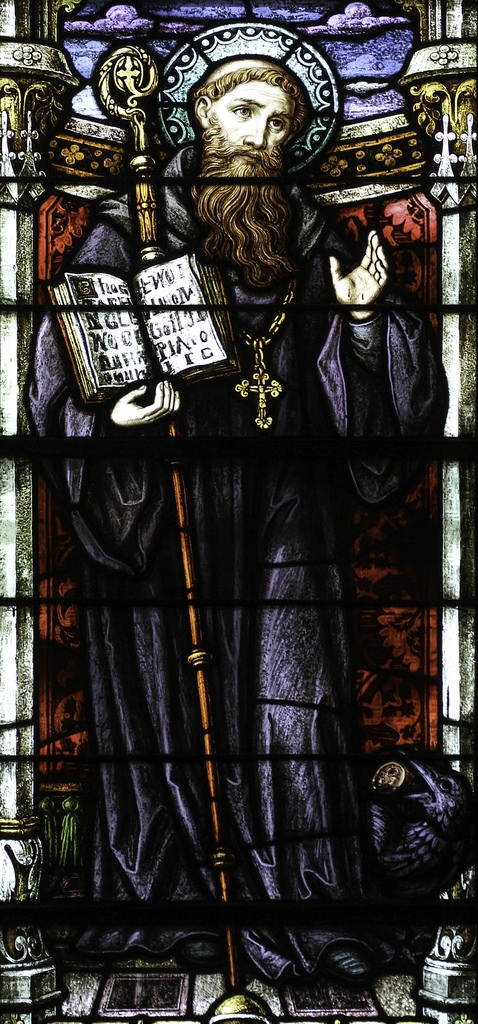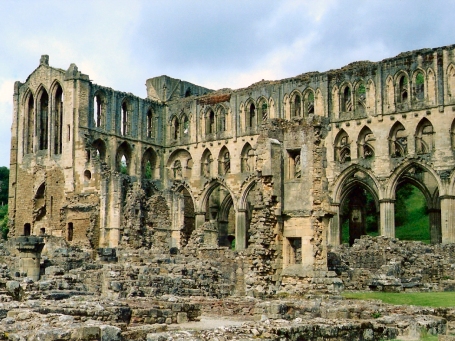Winter | Summer | Glossary
For most monks and nuns the basis of their daily life was the Rule of Saint Benedict. In his rule, Benedict devised a rigid, monotonous routine of work, prayer, study and sleep designed to make the mind and the will submissive to God. The pattern of the day varied only according to the seasons of the year and the liturgical calendar.
The schedule of a monastic day shown below is based on the Regularis Concordia – a common rule of life to be observed by all monasteries, produced around 970– which would, with some variations, have been observed from the early to mid-eleventh century.
- 2:30AM
- Preparation for night office (Nocturns); trina oratorio and gradual psalms.
- 3:00AM
- Nocturns (later known as Matins) including prayers for the royal family and for the dead.
- 5:00AM
- Reading
- 6:00AM
- Matins (Lauds) at daybreak, Prime
- 7:30AM
- Reading
- 8:00AM
- Wash and change, Terce, Morrow mass, Chapter
- 9:45AM
- Work
- 12:00PM
- Sext, Sung Mass
- 1:30PM
- None
- 2:00PM
- Dinner
- 2:45PM
- Work
- 4:15PM
- Vespers
- 5:30PM
- Change into night shoes
- 6:00PM
- Collatio
- 6:15PM
- Compline
- 6:30PM
- Bed
- 1:30AM:
- Preparation for night office (Nocturns); trina oratorio and gradual psalms.
- 2:00:AM:
- Nocturns (later known as Matins) including prayers for the royal family and for the dead.
- 3:30AM:
- Matins (Lauds) at daybreak.
- 4:00AM:
- Change and wash.
- 5:00AM:
- Trina Oratorio, Reading
- 6:00AM:
- Prime, Morrow Mass, Chapter
- 7:30AM:
- Work
- 8:00AM:
- Terce, Sung Mass
- 9:30AM:
- Reading
- 11:30AM:
- Sext
- 12:00PM:
- Dinner
- 1:00PM:
- Siesta
- 2:30PM:
- None, Drink
- 3:00PM
- Work
- 5:30PM
- Supper
- 6:00PM
- Vespers
- 7:30PM:
- Change into night shoes, Collatio
- 8:00PM:
- Compline
- 8:15PM:
- Bed
- Nocturns
- Latin: Nocturnus "by night"
The first service in the Liturgy of Hours. Prayed at the beginning of the new day between midnight and daybreak.
- Matins
- Latin: Matutinus "morning"
Chanted or recited in choir at the end of the night, before dawn.
- Prime
- Latin: Prima "first"
Consisted of a hymn, three psalms, a Scripture reading, versicles and responses and a concluding prayer.
- Terce
- Latin: Tertia "third"
Celebrated at the third hour of the Liturgy of Hours. Originating from the early practice of commemorating different moments in Christ's Passion at the third, sixth and ninth hours of the day. Terce was associated with the Crucifixion.
- Sext
- Latin: Sext "sixth"
Prayed at the "sixth hour", roughly around noon. A brief service with little variation in text and song.
- None
- Latin: Nona hora "ninth hour"
Marked the ninth hour from dawn. Another brief service with little variation in text and song.
- Vespers
- Latin: Vespers "evening star"
Celebrated in the early evening as daylight ended. Included a hymn, two psalms, a canticle, a Scripture reading, a proper responsory, the Magnificat with its antiphon, a litany of intercessory prayer, the Lord's Prayer, and a concluding blessing.
- Collatio
- A group method of prayer where a Scripture is read aloud, then each participant tells how the Scripture is speaking to them.
- Compline
- Latin: Complere "to complete"
The night service that signalled the end of the day. Consisted of a short lesson, confession, three psalms and responsory, hymn, canticle and Marian Antiphon.
Photo credits: (Related Resources) (1) Benedict of Nursia, depicted in stained glass, Stbenedict123, CC BY-SA 4.0, Wikimedia Commons, (2) St. Benedict delivering his Rule to St. Maurus and other monks of his order France, Monastery of St. Gilles, Nimes, 1129, PD-Art, Wikimedia Commons, (3) Rievaulx Abbey, Yorkshire, England, © 2000 mostly-medieval.com


